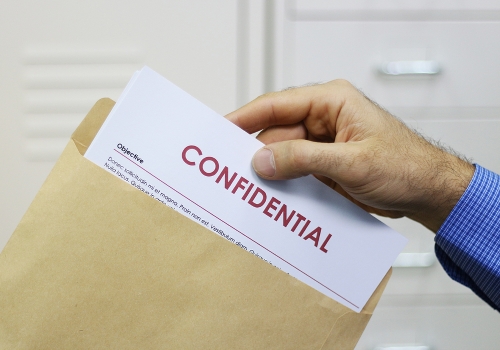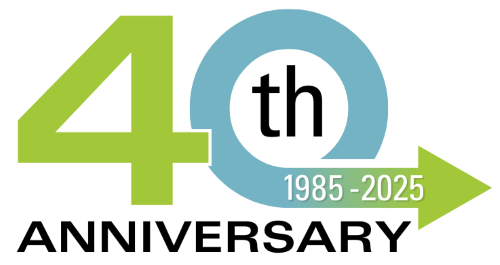Chain of Custody in Shredding: Why It Matters for Compliance
During Cybersecurity Awareness Month in October, businesses across the greater Portland, Oregon and Vancouver Washington metro areas face mounting pressure to protect sensitive information. While digital security grabs headlines, physical document security remains equally critical. One principle stands as your frontline defense against data breaches and compliance failures: chain of custody in document destruction.
Your confidential documents don’t cease being vulnerable the moment they leave your hands. Every step from collection to final destruction creates potential security gaps. Understanding and implementing proper chain of custody procedures transforms document destruction from a routine task into a strategic security measure.
What is Chain of Custody in Shredding?
Chain of custody refers to the documented, secure handling of your confidential documents from pickup to complete destruction. It’s not just paperwork—it’s a systematic approach that tracks who handled your sensitive materials, when they handled them, and exactly what happened to every document along the way.
This process begins when mobile shredding services arrive at your Portland or Vancouver location. Security-trained personnel inventory your materials, creating detailed records of what’s being collected. Each container, bag, or box receives unique identification, establishing an unbroken documentation trail.
The chain continues during transportation. Professional shredding services maintain secure, sealed vehicles where your documents remain individually tracked and protected from unauthorized access. Whether heading to an off-site shredding facility or being processed on-site, every movement gets documented.
Finally, the destruction process itself becomes part of the recorded chain. Witnesses verify the shredding, destruction methods are documented, and certificates of destruction provide formal proof that your information was permanently eliminated according to industry standards.
Why Chain of Custody Matters for Compliance
Regulatory compliance isn’t optional for businesses handling sensitive information. HIPAA, FERPA, GLBA, SOX, FACTA, and CTDPA all mandate specific document destruction requirements. Chain of custody documentation serves as your proof of compliance when auditors come calling.
Legal protection extends beyond regulatory requirements. In litigation scenarios, you need documented proof that confidential materials were properly destroyed. Chain of custody records become crucial evidence demonstrating your organization’s commitment to information security.
NAID AAA Certification requires strict chain of custody procedures. This certification represents the industry’s highest security standard, and compliance depends on maintaining unbroken documentation throughout the destruction process.
Consider the risks of inadequate chain of custody. Without proper documentation, you cannot prove compliance during audits. Gaps in the chain create liability exposure, potentially resulting in regulatory fines, legal action, and damaged reputation. For businesses in competitive markets across southern Washington state, these consequences can be devastating.
Industry-Specific Compliance Requirements
Medical practices face particularly stringent requirements under HIPAA. Patient information demands the highest level of security, and chain of custody documentation provides essential audit trail protection.
Law firms managing client confidentiality must demonstrate secure document handling. Legal privilege extends to document destruction, making chain of custody records critical for maintaining attorney-client protection.
Financial institutions handling sensitive customer data need documented proof of secure destruction to satisfy regulatory oversight and maintain customer trust.
Best Practices for Maintaining Chain of Custody
Successful chain of custody starts with selecting the right shredding provider. Look for companies offering comprehensive documentation, security-cleared personnel, and certified destruction processes. Your provider should maintain detailed logs, provide certificates of destruction, and offer audit trail documentation.
Establish clear internal procedures before documents leave your facility. Designate authorized personnel for document release, implement secure storage until pickup, and maintain internal logs of materials scheduled for destruction.
Regular audits strengthen your chain of custody procedures. Review documentation processes periodically, verify that all steps are being followed consistently, and address any gaps immediately. Remember, chain of custody is only as strong as its weakest link.
Technology enhances traditional chain of custody procedures. Modern shredding services offer digital tracking systems, providing real-time updates on your document’s location and status throughout the destruction process.
Choosing the Right Destruction Service
Not all shredding services maintain equal chain of custody standards. When evaluating providers, ask specific questions about their documentation procedures, security clearances, and certification levels.
Scheduled recurring shredding service creates consistency in your chain of custody procedures. Regular, documented pickups establish routine security protocols and reduce the risk of procedural gaps.
For sensitive purge projects, one-time shredding service should maintain the same rigorous chain of custody standards as ongoing programs.
During Cybersecurity Awareness Month, evaluate your current document destruction procedures. Are you maintaining proper chain of custody? Can you prove compliance when auditors arrive? Your organization’s information security depends on these fundamental protections.
DataSafe provides comprehensive shredding services to businesses and residents in greater Portland, Oregon and Vancouver metro areas and southern Washington state. For document security shredding inquiries or to schedule document security service, complete the form on this page or call us at: Portland (503) 620-3423 or Vancouver (360) 218-2582.

Get Your Quote
"*" indicates required fields

